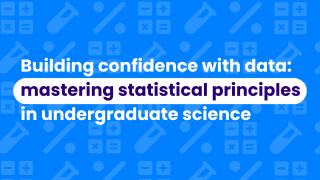Why students hide their struggle
Today’s university students face immense pressure, though they’re not alone in this experience. Across generations, students have carried the belief that success follows a specific formula: get into a good university, get good grades, earn a good degree, and then secure a good job. While this path may seem logical and familiar to most, it places an overwhelming emphasis on performance and perfection. Many students retreat into silence or look for shortcuts. It is then no surprise that, more recently, students have turned to generative AI tools, not to deepen their understanding, but to deliver the correct answers to assessments to avoid the discomfort of making mistakes.
When formative assessments are completed through shortcuts, it becomes harder for educators to identify who truly understands the content. Therefore, the opportunity to intervene early is lost.
So, how do we foster an environment where students can rely on their own knowledge and skills rather than immediately turning to other tools for answers?
Creating a safe environment to learn and grow
Learning from mistakes starts with a safe environment, one that educators have created through intentionally designed learning experiences. Many students arrive at university hesitant to take risks or make mistakes; however, this is exactly where the process of learning through trial and error should begin.
It is not only about delivering content; it is about the learning cycle, where students need opportunities to explore what they have learnt, test their understanding, and receive guidance along the way. Unfortunately, with increasingly large cohort sizes and limited 1:1 contact time, it is becoming harder for educators to identify when students are struggling.
Creating a supportive environment gives students the freedom to get things wrong without fear or judgement. That’s where resources like our Smart Worksheet Library can help. These interactive, feedback-driven tools provide repeatable practice and instant feedback, fostering a low-stakes environment, where students can learn from their mistakes and build deeper understanding.
What might a safe environment look like for your curriculum?
Immediate remedy of error
When a student makes a mistake, whether it’s a small formatting issue like writing in standard form or a deeper conceptual misunderstanding, they’re guided, not penalised. Over time, this builds appreciation for mistakes, truly learning the value of error.
Developing a sense of satisfaction and achievement
When students are prepared, they improve in confidence and competence, attributes which go hand-in-hand.
- As students develop competence, they become more secure in their knowledge and more willing to engage with unfamiliar material. They’re prepared to try, even when they don’t know the answer straight away.
- Confidence enables students to participate in lectures, workshops, and practicals. It gives them the reassurance to ask questions, take risks, and put their hand up, knowing that mistakes are part of the process.
Together, confidence and competence foster greater independence, satisfaction, and deeper learning.
Instant feedback and transparency
When students receive instant feedback, they are able to work through their assessments with guidance. This transparency is crucial for learning. Quickly, students can understand what they know, what they’ve misunderstood, and where they need to improve. This means students can position themselves in relation to the learning outcomes, self-evaluate and track their progress over time. It guides them toward the areas they need to improve, and helps them feel more in control of their learning.


.png)